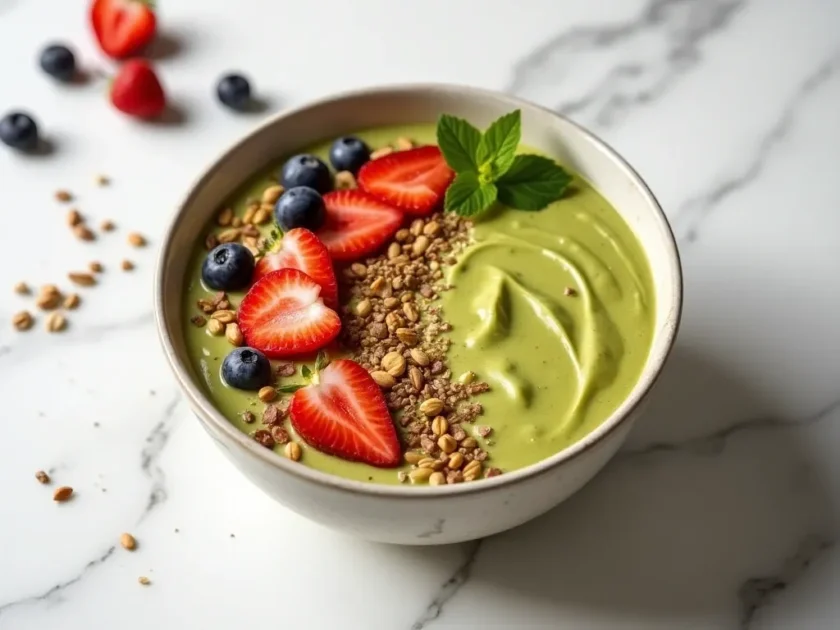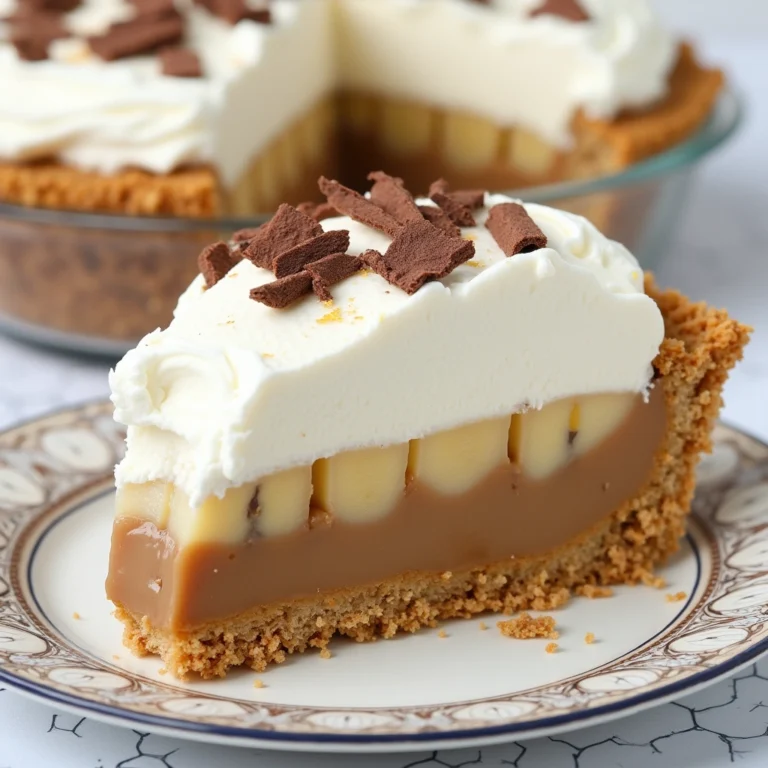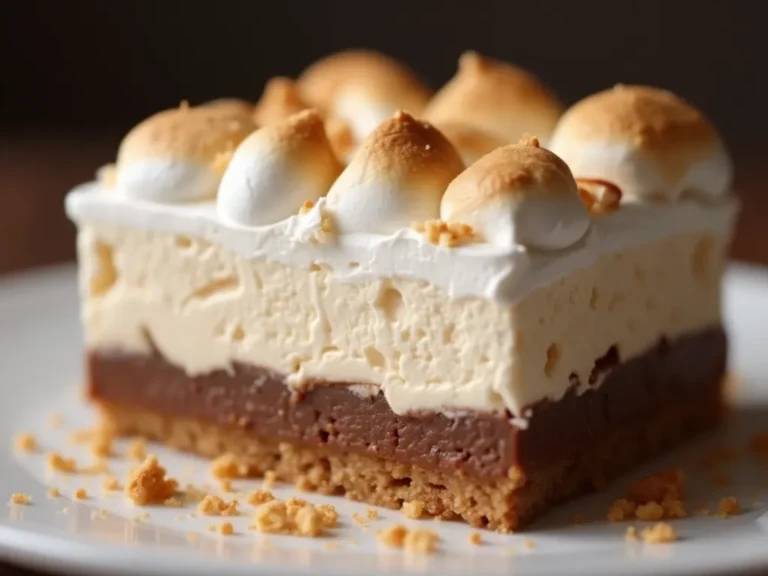How to Make Pistachio Butter (Healthy, Easy & Delicious)
How to make pistachio butter at home in minutes! Smooth, healthy, & fully customizable with just 1 ingredient.
How to Make Pistachio Butter at Home: A Creamy DIY Delight
Making pistachio butter at home is easier than you might think—and the results are absolutely worth it. Whether you’re looking to cut out additives, explore unique flavors, or just enjoy a fresh and creamy spread, pistachio butter delivers on taste, nutrition, and simplicity. In this article, you’ll learn everything from choosing the right pistachios to blending tips and creative ways to enjoy this vibrant green nut butter. You’ll also find pro tips, answers to common questions, and a full breakdown of how to store and even sell your homemade creation.
Why Homemade Pistachio Butter Is Worth It
Health Benefits of Pistachio Butter
Homemade pistachio butter is a powerhouse of nutrients. Unlike many store-bought spreads that include added oils, sugars, and preservatives, making it yourself gives you total control over what goes in—and what stays out. Here’s why this green delight is a healthy choice:
- Rich in healthy fats: Pistachios contain monounsaturated and polyunsaturated fats that support heart health.
- High in protein: With about 6g of protein per ounce, it’s a great source of plant-based fuel.
- Packed with antioxidants: Including lutein and zeaxanthin, which are great for eye health.
- Blood sugar friendly: Pistachios have a low glycemic index and can help stabilize blood sugar levels.
- Fiber-rich: They aid digestion and keep you feeling full longer.
In comparison to peanut or almond butter, pistachio butter offers a slightly sweeter taste and a vibrant color that elevates both the nutritional and visual appeal of your dishes.
Comparing Store-Bought vs. Homemade Pistachio Butter
So why not just grab a jar off the shelf? Here’s why going homemade is better:
| Feature | Store-Bought Pistachio Butter | Homemade Pistachio Butter |
|---|---|---|
| Cost | Expensive due to processing | More affordable per batch |
| Additives | May include sugar/oils | No additives unless you add |
| Freshness | Variable shelf life | Made fresh when you need it |
| Texture Control | Pre-set by manufacturer | You control the consistency |
| Flavor Customization | Limited options | Easily add spices or sweeteners |
Homemade pistachio butter also lets you skip unnecessary ingredients. You don’t need preservatives to keep it fresh if you store it properly.
Looking for inspiration? Try this Pistachio Butter Uses and recipes .
Ingredients and Equipment You’ll Need
Before you start making your own pistachio butter, it’s important to gather the right ingredients and tools. Luckily, you don’t need much. In fact, with just a few basic items and a little time, you can make smooth and tasty pistachio butter at home. Let’s break it down step by step so you know exactly what to use and why.
Choosing the Best Pistachios (Raw vs. Roasted)
First, let’s talk about pistachios—the star of the show. Choosing the right kind of pistachios is the first step to getting a great result. There are two main types to consider: raw pistachios and roasted pistachios.
Raw Pistachios
- These are natural and not cooked.
- They have a mild, slightly sweet flavor.
- They are a great choice if you want full control over the roasting.
- Make sure to buy unsalted and shelled raw pistachios for best results.
Roasted Pistachios
- These are already cooked and have a deeper, nuttier taste.
- You can use them straight away, but make sure they are unsalted.
- However, roasting your own gives better flavor and lets you skip added oils or salt.
Now, if you want a brighter green color and smoother texture, you can remove the thin skins after roasting. It takes a little time, but it’s worth it for a more polished final product.
Don’t miss our tips on roasting pistachios for the best flavor.
Here’s a quick chart to help you decide:
| Type of Pistachios | Flavor | Good For | Prep Work Needed |
|---|---|---|---|
| Raw | Mild, sweet | Healthier or lighter spreads | Optional roasting and peeling |
| Roasted | Bold, nutty | Richer and deeper flavor | Use as-is or roast again |
Essential Tools: Blender vs. Food Processor
Next, you’ll need the right equipment to blend your pistachios into butter. You don’t need anything fancy, but choosing the right tool will make the process easier and faster.
Food Processor
- This is the best tool to use for making nut butter.
- It blends smoothly without heating up too much.
- It’s easy to stop, scrape the sides, and keep blending until smooth.
- Most importantly, it gives you a creamy texture with less effort.
High-Speed Blender
- A blender can work too, but it needs to be strong.
- You may need to blend in short bursts and use a tamper to push the nuts down.
- It might also require a little oil to help the pistachios move.
If you only have a regular blender, it may still work, but it could take longer and might not get as smooth.
Check out our recommended tools for nut butter making to learn more.
Optional Ingredients for Extra Flavor or Texture
Now that you have your pistachios and tools ready, you might want to add a few optional ingredients. These are not required, but they can help you change the taste or texture to your liking.
Here are a few great options:
- Neutral Oil (like avocado or sunflower oil) – Helps make the butter smoother if your blender struggles.
- Salt – Just a pinch can bring out the natural flavor of pistachios.
- Sweeteners – Add honey, maple syrup, or powdered sugar if you want a sweeter taste.
- Spices – Try cinnamon, cardamom, or even vanilla to add a fun twist.
Keep in mind: If you add sweeteners or oil, your pistachio butter may not last as long, so be sure to store it in the fridge.
Step-by-Step Guide to Making Pistachio Butter
Ready to turn those vibrant green pistachios into rich, creamy pistachio butter? This step-by-step guide breaks down the entire process into easy, manageable steps. Whether you’re using a high-powered food processor or a quality blender, you’ll get the smooth, spreadable texture you’re aiming for with just one main ingredient: pistachios.
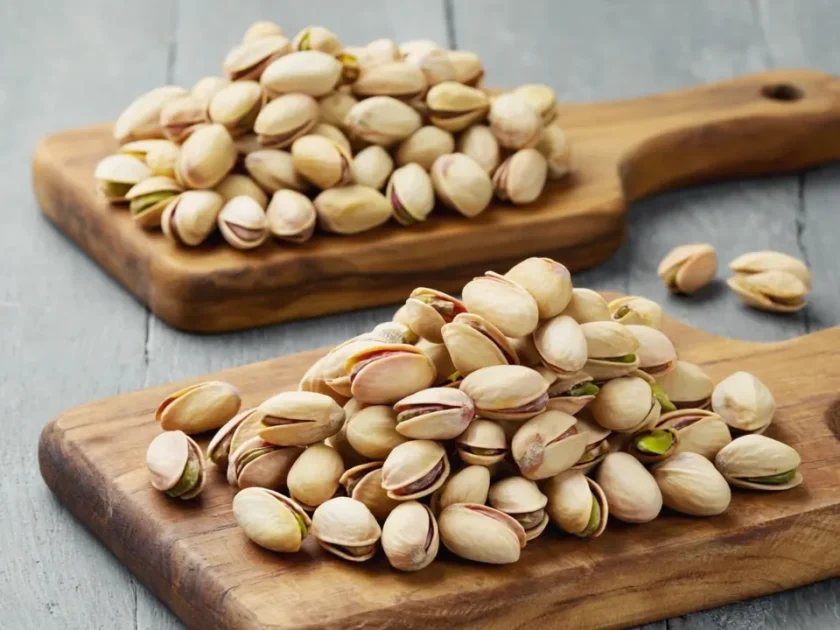
Blending Techniques for Ultra-Smooth Butter
Getting your pistachio butter smooth and creamy requires some patience and a few blending tricks. Here’s how to make pistachio butter like a pro:
Step 1: Roast the Pistachios (If Raw)
- Preheat your oven to 350°F (175°C)
- Spread shelled pistachios evenly on a baking tray
- Roast for 6–8 minutes, shaking halfway through to prevent burning
- Let them cool completely before blending (this prevents steam and clumping)
Step 2: Transfer to Processor or Blender
- Place roasted (and optionally peeled) pistachios in your food processor or blender
- Start pulsing to break down the nuts into crumbs
Step 3: Blend in Stages
The process happens in phases—don’t rush it.
- Phase 1: Crumb stage – Pistachios become a coarse meal
- Phase 2: Dough stage – The meal clumps into a ball
- Phase 3: Breakthrough – The oils begin to release
- Phase 4: Creamy – The butter smooths out into a silky texture
Tip: Scrape down the sides every 30–45 seconds to ensure an even blend.
Step 4: Optional Additions
Once your butter reaches the right texture, you can mix in:
- 1/2 tsp sea salt
- 1–2 tsp neutral oil for extra creaminess
- 1 tbsp honey or maple syrup for sweetness
Blend again for 10–15 seconds to fully incorporate.
Step 5: Store Properly
Transfer to an airtight glass jar or container. Allow it to cool fully at room temperature before refrigerating.
Here’s a quick visual breakdown:
| Stage | Time Needed | Texture | Action Step |
|---|---|---|---|
| Crumb | 30 sec | Coarse pieces | Pulse or blend |
| Dough | 1–2 min | Thick ball | Scrape sides, keep blending |
| Oil Release | 2–3 min | Glossy, looser | Add optional oil if needed |
| Final Butter | 4–6 min | Smooth, creamy | Season or sweeten to taste |

Troubleshooting Texture: What to Do if It’s Too Dry or Oily
Even the best ingredients and tools can produce different results based on batch size or humidity. Here’s how to fix common pistachio butter problems:
Problem: It’s Too Dry or Grainy
- Cause: Under-roasted nuts or insufficient blending time
- Fix: Add 1 tsp of oil and blend for another 1–2 minutes
- Tip: Use warm nuts to speed up oil release
Problem: It’s Too Oily
- Cause: Overprocessing or pistachios with high oil content
- Fix: Stir in a spoonful of oat flour or almond flour to absorb excess oil
- Tip: Let it chill in the fridge for 30 minutes—it will thicken naturally
Problem: It’s Not Blending
- Cause: Low-powered appliance
- Fix: Blend in smaller batches or stop and let your appliance cool
- Tip: Don’t be afraid to add 1–2 tsp of liquid oil for better flow
Flavoring and Customizing Your Butter
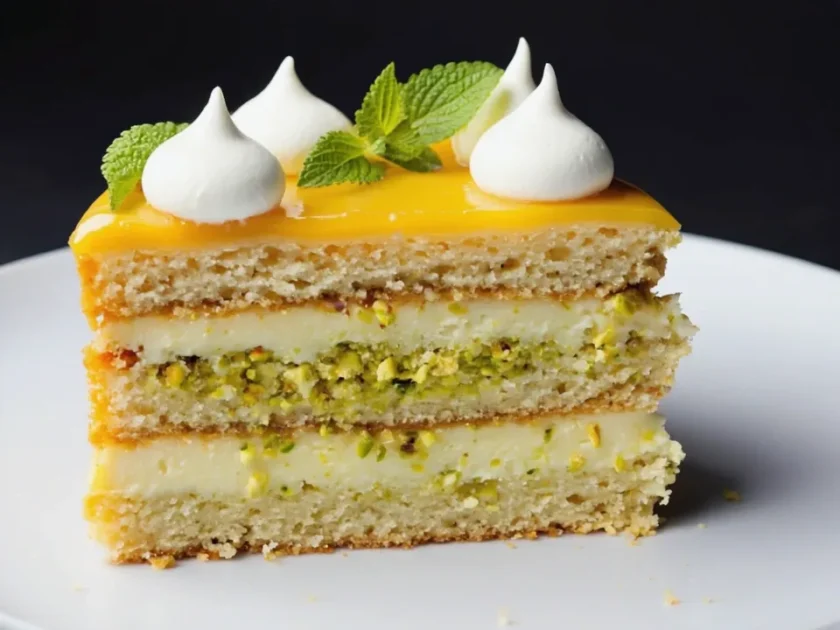
One of the best perks of making your own pistachio butter at home is the ability to tweak the flavor to your liking. From sweet to savory, the customizations are nearly endless—and all it takes are a few simple ingredients. Whether you want to elevate your pistachio butter with gourmet touches or just give it a little extra personality, this section shows you how.
Adding Sweeteners, Spices, or Oils
Want a pistachio butter that’s perfect for breakfast toast or spooning into oatmeal? A touch of sweetness and spice goes a long way.
Here are a few ideas:
Sweeteners:
- Honey: Classic and floral. Start with 1 tsp and adjust to taste.
- Maple syrup: Adds warmth and a hint of caramel flavor.
- Powdered sugar: Helps keep the butter thick and spreadable.
- Dates or date syrup: For natural sweetness and a fiber boost.
Oils:
- Neutral oils (like avocado, grapeseed, or sunflower oil): Help thin out thick butter while maintaining flavor neutrality.
- Coconut oil: Adds richness and a subtle tropical note—great for dessert-style butters.
Tip: Add oil in ½ teaspoon increments until you reach the desired texture.
Spices:
- Cinnamon: Adds warmth and pairs beautifully with sweeteners.
- Cardamom: Classic Middle Eastern flavor that enhances pistachios.
- Vanilla extract: Just a drop brings dessert-style butter to life.
Looking for inspiration? Try this TikTok recipe that uses powdered sugar and coconut oil for a creamy, dessert-like pistachio paste.
Here’s a simple sweet recipe combo:
Sweet Pistachio Butter Blend
- 1 cup roasted pistachios
- 1 tsp honey
- ½ tsp vanilla
- Pinch of sea salt
- Optional: ½ tsp coconut oil for texture
Blend until smooth and creamy. Use on toast, in yogurt, or as a dip for fruits.
Making Savory Pistachio Butter Variations
If you’re leaning more toward a savory spread—think sandwich base or veggie dip—here are bold flavor ideas to try:
Savory Add-ins:
- Sea salt: Just a pinch enhances the natural nuttiness.
- Garlic powder: For a subtle punch.
- Smoked paprika or chili flakes: Adds a warm, spicy edge.
- Lemon zest: Brightens up the flavor with a fresh citrus twist.
- Nutritional yeast: Gives it a “cheesy” umami flavor (great for vegans).
These options make pistachio butter perfect for savory recipes, from dressings to pasta sauces.
You can even create small custom batches using ¼ cup of pistachios per flavor combo to experiment without committing a full jar.
Flavor Pairing Table:
| Flavor Style | Sweeteners/Spices | Ideal Uses |
|---|---|---|
| Classic Sweet | Honey, vanilla | Toast, oatmeal, smoothies |
| Dessert-Inspired | Maple, cinnamon, coconut | Cakes, brownies, crepes |
| Savory | Garlic, lemon, paprika | Sandwiches, dips, dressings |
| Gourmet | Cardamom, sea salt, oil | Cheese boards, spreads, gifts |
PART 6: Storage, Shelf Life, and Safety Tips
Now that you’ve created a batch of delicious pistachio butter, the next step is keeping it fresh, safe, and ready to enjoy whenever you need it. While this nut butter is naturally stable due to its fat content, proper storage is key to maximizing its shelf life and maintaining its rich, creamy texture. Let’s explore the best ways to store it and avoid common pitfalls.

How Long Does Pistachio Butter Last?
Pistachio butter doesn’t contain preservatives unless you add them. Therefore, it has a shorter shelf life than store-bought varieties, but when stored correctly, it can last for weeks without losing quality.
Here’s a simple breakdown of shelf life based on where it’s stored:
| Storage Method | Shelf Life | Notes |
|---|---|---|
| Pantry (cool, dark) | 7–10 days | Only if unsweetened and stored airtight |
| Refrigerator | 3–4 weeks | Best option for long-lasting freshness |
| Freezer | Up to 3 months | Ideal for large batches or flavored butter |
That said, as a general rule of thumb, homemade pistachio butter stays freshest in the fridge. If you add any ingredients like honey, coconut oil, or spices, refrigeration is even more important to prevent spoilage.
Additionally, always check for signs of spoilage such as:
- Rancid smell (sour or paint-like odor)
- Mold or discoloration
- Separation with strange texture (some oil separation is normal, just stir it back in)
Tip: To extend shelf life even more, consider using sterilized glass jars and clean, dry utensils each time you scoop from the container.
Best Storage Containers and Locations
Equally important to the “where” is the “how.” Using the right container can prevent exposure to air, moisture, and light, all of which speed up the oxidation process.
Here are the best options for safe and long-lasting storage:
✅ Glass Jars with Tight-Fitting Lids
These are your best bet. Glass is non-reactive, and tight lids protect the butter from air.
Try reusing old jam jars or mason jars—just make sure they’re clean and dry before filling.
✅ BPA-Free Plastic Containers
These work if glass isn’t available. Choose ones designed for food storage and always seal tightly.
❌ Avoid: Metal or Thin Plastic
Metal containers can react with the oils in nuts, and thin plastic can let air in, which encourages spoilage.
Moreover, store pistachio butter away from direct sunlight, even when refrigerated. Light accelerates degradation and can cause the fats to break down faster.
Don’t forget:
- Label your jars with the prep date
- Store sweetened versions in the coldest part of your fridge (not the door)
- Keep a small serving portion in a separate jar for daily use to reduce repeated exposure
Looking for inspiration? Try this storage guide for nut butters to keep every batch tasting fresh.
Lastly, if you’re planning to freeze pistachio butter, divide it into small portions using silicone molds or freezer-safe mini jars. This makes it easy to defrost only what you need, preventing waste and preserving flavor.
Bonus Tips for Food Safety
Because pistachio butter is high in natural oils, oxidation is the biggest threat to quality—not bacteria. However, cross-contamination can still happen if:
- You double-dip utensils
- You leave it open to air for too long
- You add moist ingredients like fresh fruit
So always use clean, dry spoons and reseal your container immediately after use.
Moreover, if you’re gifting or selling your butter, add a label that clearly states:
- The date it was made
- Storage instructions
- “Refrigerate after opening” warning
- Allergen disclaimer (contains tree nuts)
Flavoring and Customizing Your Butter
Now that you’ve mastered the basics of how to make pistachio butter, why stop there? One of the best things about making it from scratch is the endless opportunity to customize it exactly to your taste. Whether you prefer it sweet for your morning toast or savory for dips and sauces, you can easily elevate your homemade pistachio butter with just a few creative tweaks. Let’s dive into the delicious possibilities.
Adding Sweeteners, Spices, or Oils
To begin with, if you’re someone with a sweet tooth, enhancing your pistachio butter with a touch of sweetness can take it to a whole new level. In fact, adding just one or two ingredients can turn your plain pistachio butter into a dessert-worthy spread.
Sweeteners to Try:
- Honey – A natural choice, honey brings floral notes and pairs beautifully with the nutty flavor. Start with 1 teaspoon.
- Maple Syrup – Ideal for those who want a deeper, caramel-like sweetness with vegan appeal.
- Powdered Sugar – Common in pistachio pastes used in baking, this helps keep the texture thick and spreadable.
- Date Syrup or Blended Dates – Great for natural sweetness with added fiber and minerals.
As you consider adding sweetness, remember that less is often more. Begin with a small amount and taste as you go.
Next, let’s look at the spices that can give your butter an extra edge. Spices not only enhance flavor but also add warmth and complexity to your recipe.
Flavor-Boosting Spices:
- Cinnamon – Adds a comforting, familiar taste that works well with sweet spreads.
- Cardamom – This aromatic spice brings a Middle Eastern flair that pairs perfectly with pistachios.
- Vanilla Extract – Just a splash can transform your pistachio butter into a gourmet treat.
Furthermore, oils can play a dual role—enhancing texture and adding subtle flavor. For instance:
Optional Oils:
- Neutral oils (grapeseed, sunflower, avocado) – Help loosen the texture without overpowering the pistachio taste.
- Coconut oil – For those who enjoy a hint of tropical sweetness, this is a fantastic option.
Pro Tip: Always add oil gradually—start with ½ teaspoon and increase only if needed to adjust consistency.
Moreover, for inspiration and visual examples, check out this creative TikTok version that blends powdered sugar and coconut oil into a smooth, dessert-style pistachio paste.
Here’s a simple flavor combo to try:
Sweet Pistachio Butter Recipe
- 1 cup roasted pistachios
- 1 tsp honey
- ½ tsp vanilla extract
- Pinch of sea salt
- Optional: ½ tsp coconut oil for smoothness
Blend until silky and store in an airtight jar.
Making Savory Pistachio Butter Variations
On the other hand, if you’re more of a savory snack fan, you’ll be glad to know that pistachio butter shines in that department too. A few carefully chosen ingredients can create a savory spread perfect for sandwiches, pasta, or as a dip.
To get started, consider these savory add-ins:
Savory Additions:
- Sea Salt – Brings out the natural flavor of the pistachios; just a pinch goes a long way.
- Garlic Powder – Adds subtle sharpness, making it great for wraps and sauces.
- Smoked Paprika or Chili Flakes – Introduce a bold, smoky kick with just a small amount.
- Lemon Zest or Juice – Brightens the flavor and balances the richness.
- Nutritional Yeast – Offers a cheesy, umami depth, especially loved by plant-based eaters.
Additionally, you can make themed variations such as:
- Mediterranean pistachio butter – Add olive oil, lemon, garlic, and oregano.
- Spicy pistachio dip – Blend with chili, salt, and roasted cumin seeds.
Here’s a flavorful savory combo to explore:
Savory Pistachio Butter Recipe
- 1 cup roasted pistachios
- 1/2 tsp sea salt
- 1/4 tsp smoked paprika
- Zest of 1/2 lemon
Blend and use as a sandwich spread or veggie dip.
Not to mention, these savory versions are fantastic as quick garnishes for grilled vegetables or pasta toppings.
Discover great ideas like nut butter use in savory cooking for even more ideas.
Try Small Batch Experiments
If you’re unsure which flavor you’ll love most, try this approach: make small batches using ¼ cup of pistachios each, and test different combinations. That way, you won’t commit your full jar to a single style, and you can discover your favorite by taste-testing.
Bonus Tip: Use labeled mini jars or silicone molds to separate your custom flavors. They’re also great for gifting.
Finally, remember that once you add flavorings—especially sweeteners or citrus—the shelf life may be reduced. Store these flavored variations in the refrigerator and use within two to three weeks for optimal freshness.
Conclusion: A Nutty Obsession Worth Every Scoop
Making pistachio butter at home isn’t just fun—it’s empowering. You control the flavor, texture, and ingredients, skipping the added sugars, oils, and preservatives found in store-bought versions. Whether you enjoy it as a spread, in recipes, or straight off the spoon, homemade pistachio butter is a creamy green powerhouse of nutrition and flavor.
FAQ Section: Everything You Need to Know About Pistachio Butter
Can I make pistachio butter without a food processor?
Yes, absolutely. While a food processor is ideal for consistent results, you can use a high-speed blender like a Vitamix or Blendtec. Just be aware it may take longer, and you might need to pause often to scrape the sides and prevent overheating. For lower-powered blenders, consider blending in smaller batches and adding a touch of oil to help with smoothness.
Do I need to add oil to pistachio butter?
No, you don’t have to, since pistachios are naturally oily. However, a small amount of neutral oil can help if your mixture is too dry or your blender isn’t powerful enough. Add ½ teaspoon at a time until the desired texture is achieved. Avoid strong-flavored oils like olive oil, as they can overpower the pistachio taste.
Is pistachio butter healthy?
Yes. Pistachio butter is nutrient-dense and full of healthy fats, fiber, plant-based protein, and antioxidants. It supports heart health, helps manage blood sugar levels, and can aid digestion when consumed in moderation. Unlike commercial spreads, homemade pistachio butter contains no additives or preservatives, making it a cleaner and healthier choice.
Why isn’t my pistachio butter smooth?
This is a common issue and usually happens due to:
- Under-roasting the pistachios
- Not blending long enough
- Using raw nuts with skins on
To fix this, continue blending in intervals, scrape the sides frequently, and optionally add a small amount of oil to loosen the mix. Smooth texture takes time—don’t give up too soon!
Can I sweeten pistachio butter
Definitely. Add-ins like honey, maple syrup, powdered sugar, or dates work well. Just remember, sweetened pistachio butter has a shorter shelf life, so store it in the fridge and use it within a couple of weeks.

